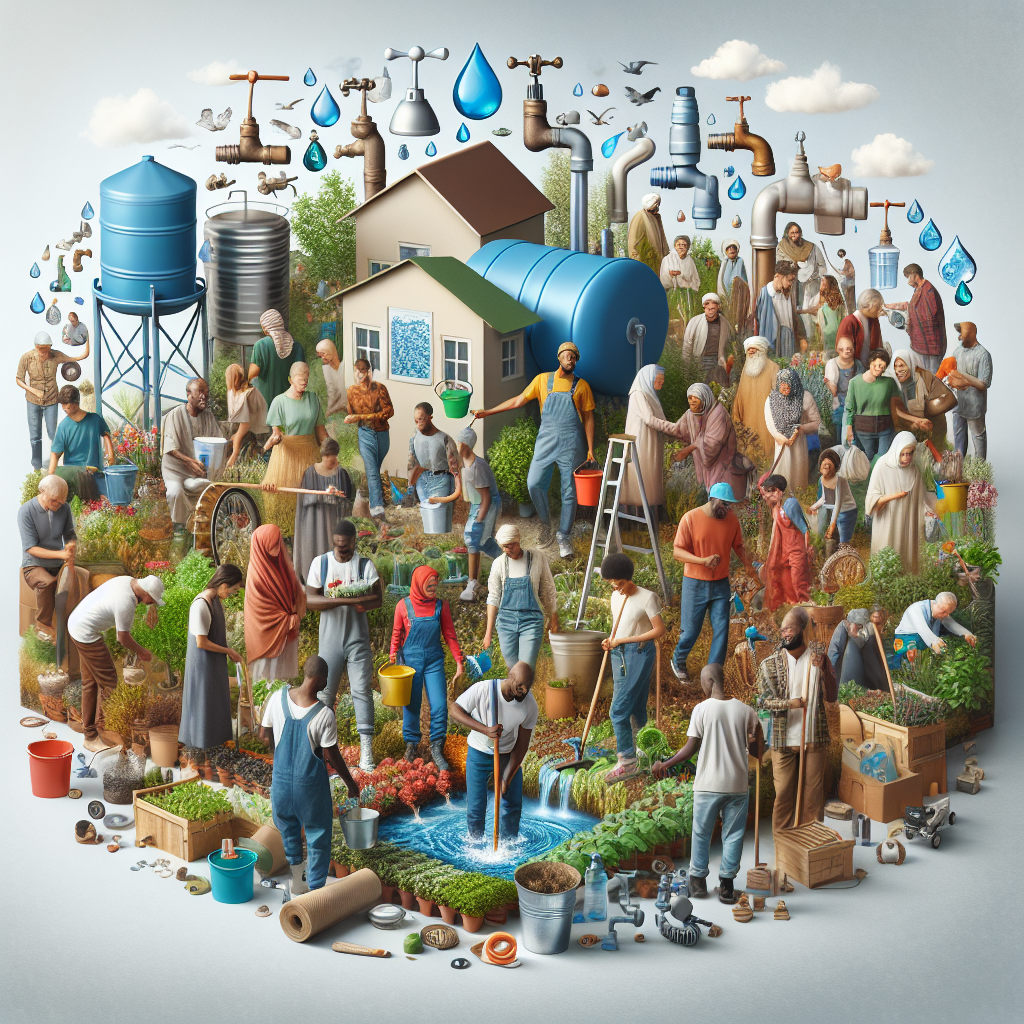The Power of Community in Water Conservation Efforts
In the face of global water scarcity, the importance of water conservation cannot be overstated. While individual efforts to save water are crucial, the collective action of communities can lead to transformative changes that are essential for sustainable water management. This article explores the significant role that communities play in water conservation efforts and how, through collaboration and shared goals, they can make a substantial impact.
The Collective Strength of Communities
Communities, whether defined by geographical boundaries or shared interests, possess a unique strength in numbers. This collective power can drive water conservation efforts more effectively than individuals acting alone. By pooling resources, sharing knowledge, and working towards a common goal, communities can implement large-scale initiatives that have a greater impact on water conservation.
Grassroots Initiatives and Local Solutions
One of the most compelling aspects of community-driven water conservation is the ability to develop grassroots initiatives that address local water challenges. Communities understand their local environment better than anyone else and can create tailored solutions that address specific issues. From rainwater harvesting systems to community gardens that use water-efficient irrigation techniques, these localized solutions not only conserve water but also strengthen community bonds.
Education and Awareness
Communities play a pivotal role in educating their members about the importance of water conservation. Through workshops, school programs, and community events, they can spread awareness about water scarcity and promote water-saving practices. Education is a powerful tool in changing behaviors, and when communities come together to learn, they empower each other to make more sustainable choices.
Policy Advocacy
When communities unite for water conservation, they also gain a stronger voice in advocating for policy changes. Local governments are more likely to implement water-saving policies and infrastructure improvements when there is a clear demand from their constituents. Community-led efforts can lead to the adoption of regulations that promote water conservation, such as restrictions on water use during droughts or incentives for installing water-efficient appliances.
Successful Community Water Conservation Projects
There are numerous examples of successful community-driven water conservation projects around the world. In India, the village of Rajendra Singh adopted traditional rainwater harvesting techniques, leading to the revival of five rivers and bringing water back to a region that was once drought-stricken. In the United States, the city of Santa Monica launched a Sustainable Water Master Plan, which involved community input and aimed to achieve water self-sufficiency through conservation and reuse initiatives.
The Role of Technology in Community Efforts
Technology plays a crucial role in enhancing community water conservation efforts. Mobile apps that track water usage, social media platforms for sharing water-saving tips, and online forums for discussing water issues can all help communities to collaborate and innovate. Furthermore, technology can help in monitoring water resources, allowing communities to make informed decisions about conservation strategies.
Overcoming Challenges
Despite the potential for significant impact, community-driven water conservation efforts face challenges. These include limited resources, lack of awareness, and resistance to change. To overcome these obstacles, communities must prioritize education, seek partnerships with local governments and organizations, and foster a culture of sustainability.
The Future of Community Water Conservation
As water scarcity becomes an increasingly pressing issue, the role of communities in conservation efforts is set to grow. By leveraging the power of collective action, embracing innovation, and advocating for sustainable policies, communities can pave the way for a future where water is managed wisely and sustainably.
FAQs
Q: How can I get involved in community water conservation efforts?
A: Look for local environmental groups or water conservation organizations in your area. Attend community meetings or events focused on sustainability. You can also start your own initiative and use social media to gather like-minded individuals.
Q: Can small communities really make a difference in global water scarcity?
A: Yes, small communities can make a significant impact. When many small communities adopt water conservation practices, the cumulative effect can lead to considerable savings in water resources.
Q: What are some simple water conservation practices that communities can adopt?
A: Communities can implement rainwater harvesting, fix leaks promptly, install water-efficient appliances, use drought-resistant plants in landscaping, and promote water conservation education.
Q: How can technology help in community-based water conservation?
A: Technology can assist communities by providing tools for tracking water usage, offering platforms for sharing information and best practices, and enabling efficient water management through smart irrigation systems and leak detection technologies.
Q: Are there any resources available for communities starting water conservation projects?
A: Many governments and non-profit organizations offer resources such as grants, toolkits, and expert advice for communities looking to start water conservation projects. Researching local and national programs can provide valuable support.
In conclusion, the power of community in water conservation efforts is immense. Through collective action, education, and advocacy, communities can drive significant progress toward sustainable water management. By recognizing the value of water and working together to protect this vital resource, we can ensure a water-secure future for generations to come.

